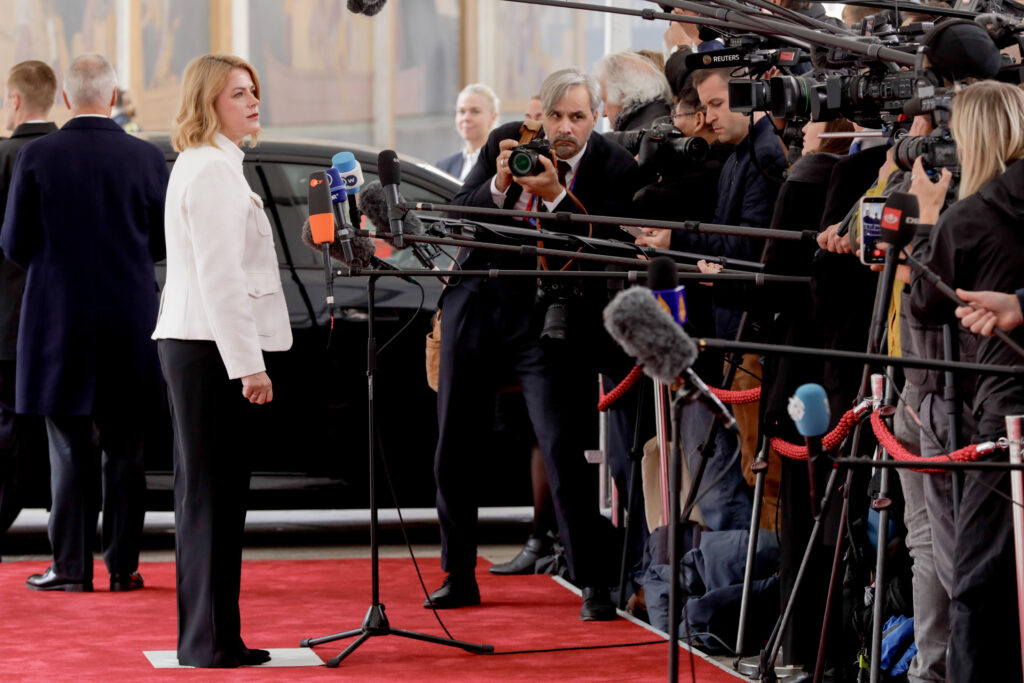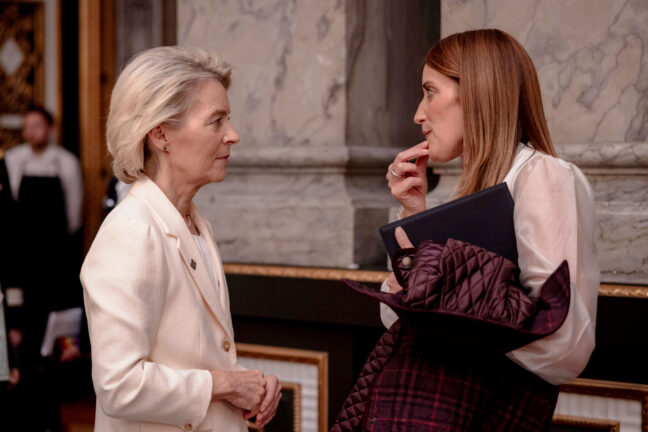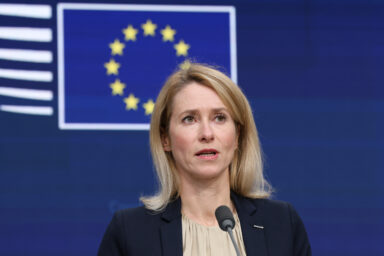EU leaders gathered in Copenhagen to advance collective defence and support for Ukraine. On the first day of the Council meeting, they emphasised political unity in the face of increasingly alarming drone incursions and intensified Russian assaults on Ukraine. The overriding aim? To pressure Moscow into backing down.
Over the two days, leaders will (first at the informal European Council and then the broader European Political Community format) examine pressing security issues: air defence, a space-based defence shield, and enhanced surveillance alongside airspace monitoring and interception through a drone wall on the so-called Eastern Flank.
While divisions have emerged in Berlin over the utility of drones, one of those urging comprehensive solutions is Finland’s Prime Minister Petteri Orpo, who pulled no punches in his doorstep remarks on Wednesday: “It’s very important to be here (…) when our security situation is very, very difficult. Russia is continuing its war of aggression in Ukraine every day and night, killing people. And now, the drones even here in Copenhagen underline what a difficult situation this is.”
Drones hit proverbial wall
He added that in the morning he had visited a military base where Finnish troops were serving alongside other European or NATO counterparts and said it served as an example of what was necessary right now.
“This is what we need more of in Europe at this moment. More solidarity; more collaboration; more unity.”
You might be interested
Not everyone believes a drone wall is a realistic solution, questioning the costs and feasibility. This week, Germany’s defence minister Boris Pistorius criticised the idea as “costly and redundant,” although a day later the wall received backing from EC President Ursula von der Leyen herself.
With proponents like the president and EU Defence Commissioner Andrius Kubilius, it is clear no one is writing off the drone wall yet. Other Wednesday arrivals echoed that sentiment, including Latvian Prime Minister Evika Siliņa, who spoke in front of the cameras. “It’s a very timely meeting today as the Russians are not stopping these drones flying over our borders and cities (…) even as far as Denmark (…) So today it’s very important to discuss what we can do in NATO and what we can do at the European level,” Ms Siliņa said.

Thawing out frozen assets
She said, on an additional note, that Latvia had called for some time for frozen Russian assets to be used to help embattled Ukraine and looked forward to a concrete proposal being discussed. At stake is some €170bn in Russian assets held in Euroclear, a Belgium-based financial clearinghouse and securities depository.
Rather than seizing the €170bn, the EU is considering a legal workaround: using the funds as collateral to guarantee loans for Ukraine. Under the plan, Ukraine would receive financing now, while the frozen assets effectively serve as security for future reparations Russia is expected—but may refuse—to pay. It’s a circular arrangement that allows the EU to mobilise the value of Russian money without formally spending it, framing the assets as a down payment on accountability rather than a confiscation.
However, it comes with political and legal technicalities, some of which could be addressed or ironed out at the meeting. Latvian Prime Minister Evika Siliņa again: “I’m looking forward to hearing a proposal how we can increase—even better—defence on our Eastern Flank or the drone wall. Something like that has always been very welcome from our side.”
Better SAFE than sorry
She congratulated Moldova, whose voters backed a pro-EU party to keep the country on track to one day join the bloc. This underlined how much of the current division and defence connects to open aggression or disinformation and political underhandeness by Russia.
Discussions over the two days are also focusing on the EU’s rapidly implemented SAFE instrument and defence loan programme, which allotted €150bn to 19 member states which applied, with the aim of boosting joint procurement of military or defence equipment, some of which would no doubt help Ukraine under daily onslaught from its neighbour.
The mechanism calls for member states to combine resources and jointly obtain military equipment—including drones, munitions, and counter-drone systems. One key topic reportedly on the table will be the European Commission’s proposal to assume a larger coordination role in defence policy, including conducting annual reviews of member state purchases. Smaller states with limited defence capacity have generally welcomed this initiative but larger countries may be wary about granting Brussels greater oversight in a domain still seen as a core national competence.
Stubb assures interviewer Trump is showing stick
Ukrainian President Volodymyr Zelenskyy is to address the leaders remotely as well from the front. No one is talking anymore about the Alaska Summit back in August. Finland’s president, Alexander Stubb, expressed optimism in an interview earlier this week that US President Donald Trump had come around and would also get tough on Russia. Speaking to anchor Erin Burnett on CNN, he said the US had tried the carrot and was now “showing the stick”.
Following the EU leaders’ meeting, the European Political Community will meet in a wider format that includes non-EU heads of state from the UK, the Balkans, Turkey and the South Caucasus.
Although no formal decisions are likely in Copenhagen, the meetings are an important step in aligning member states on common strategic objectives ahead of formal decision-making sessions later in the month. As the European security landscape evolves rapidly, the EU must go well beyond political rhetoric and take tangible and effective steps.





